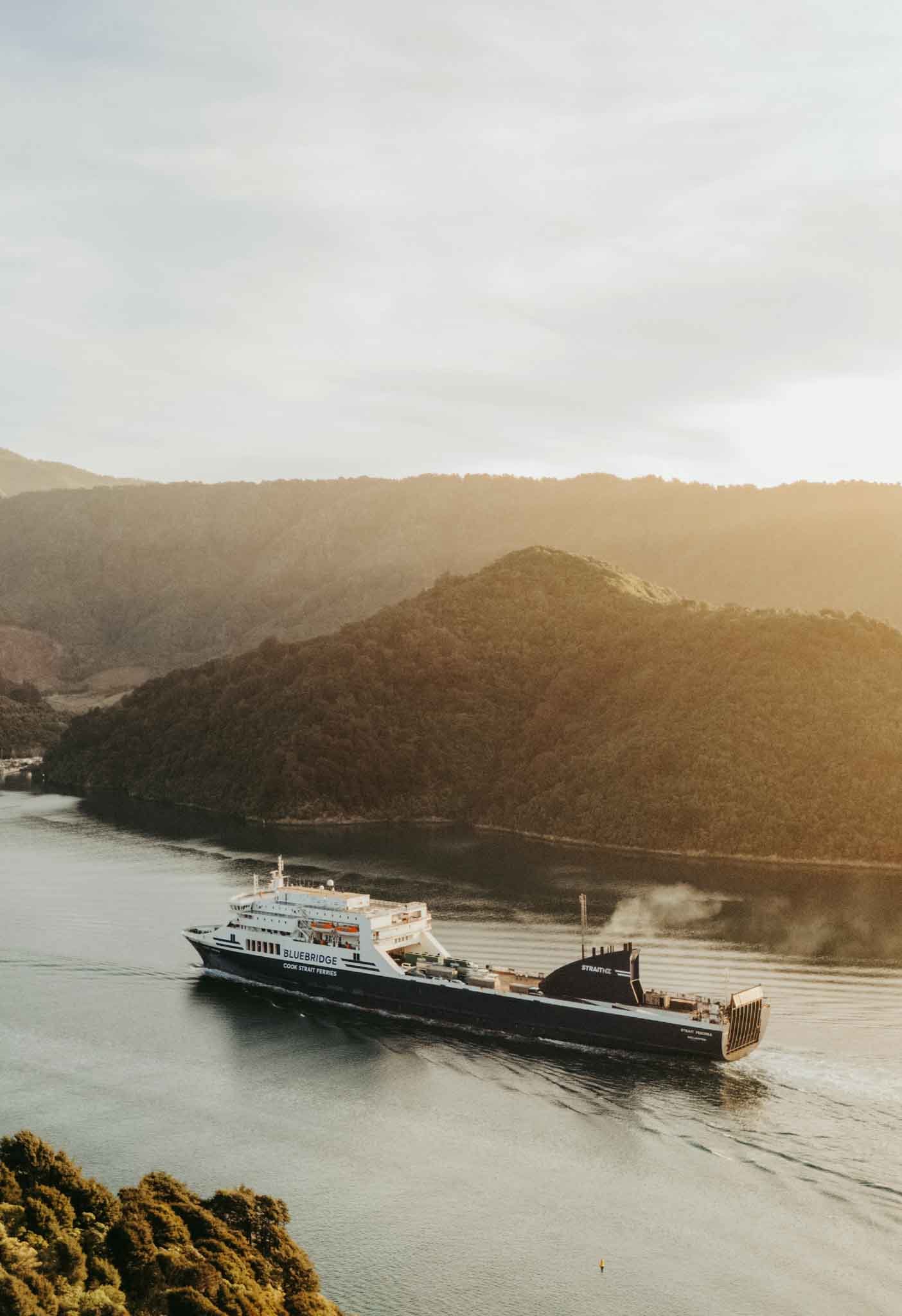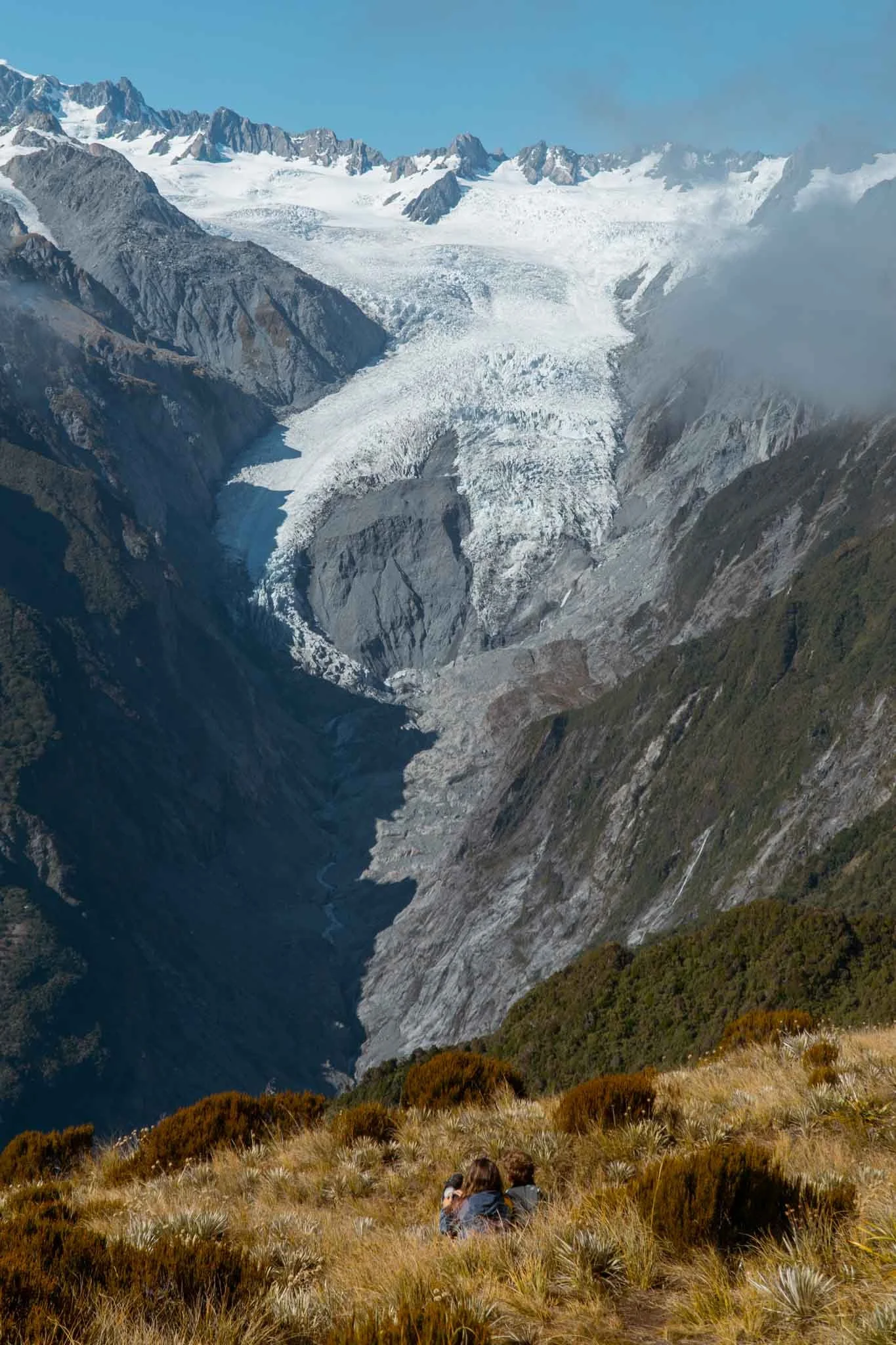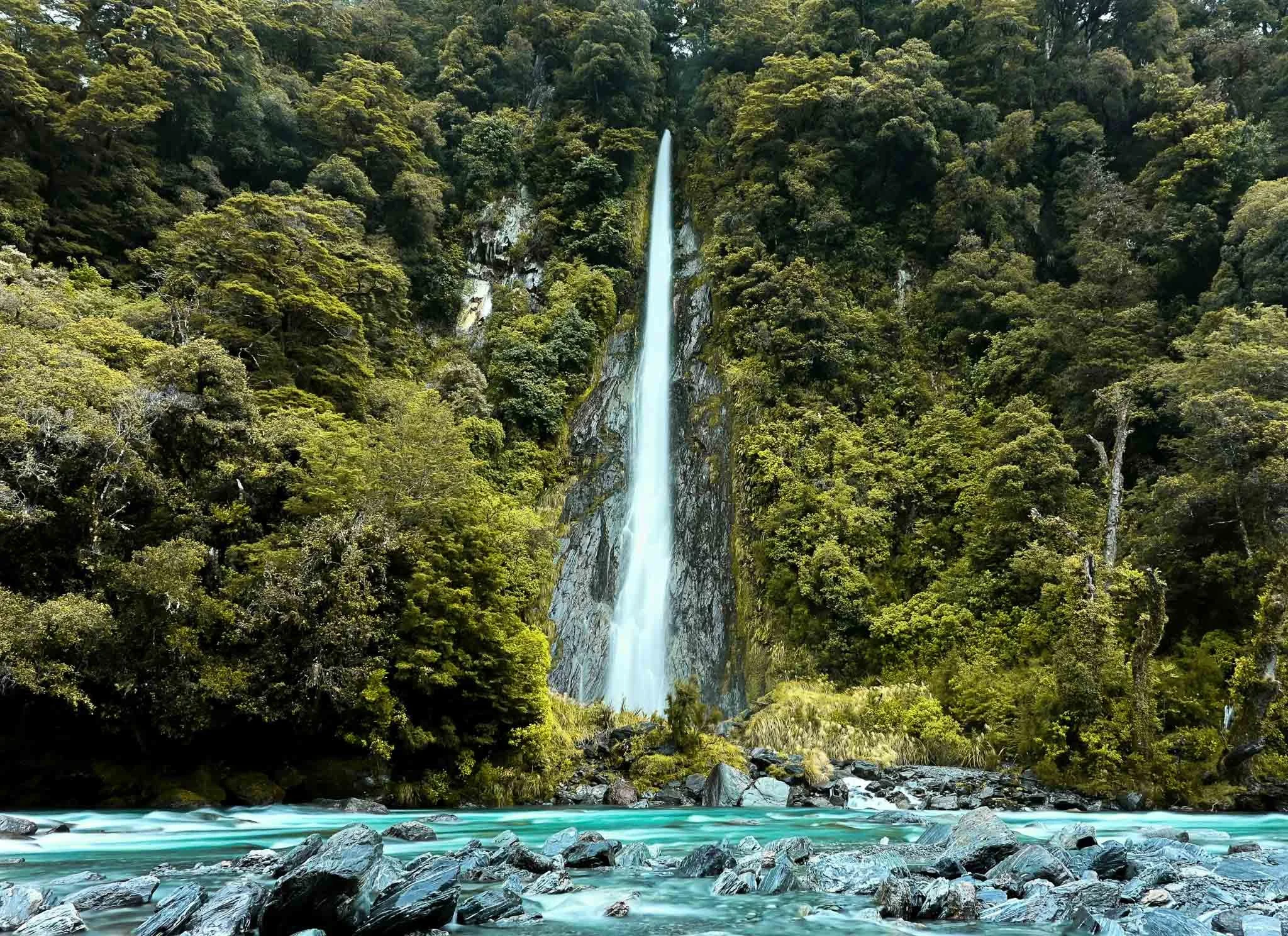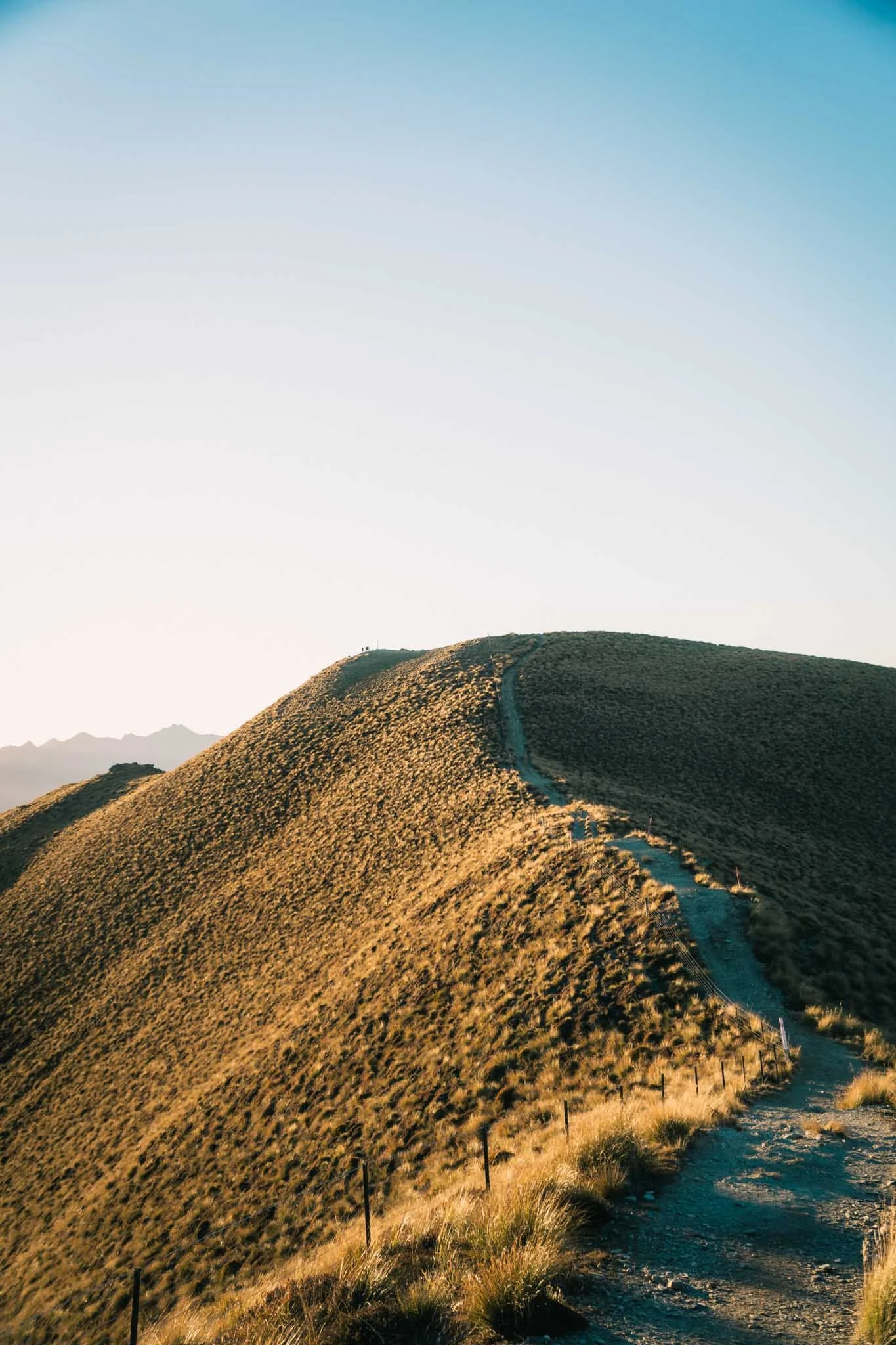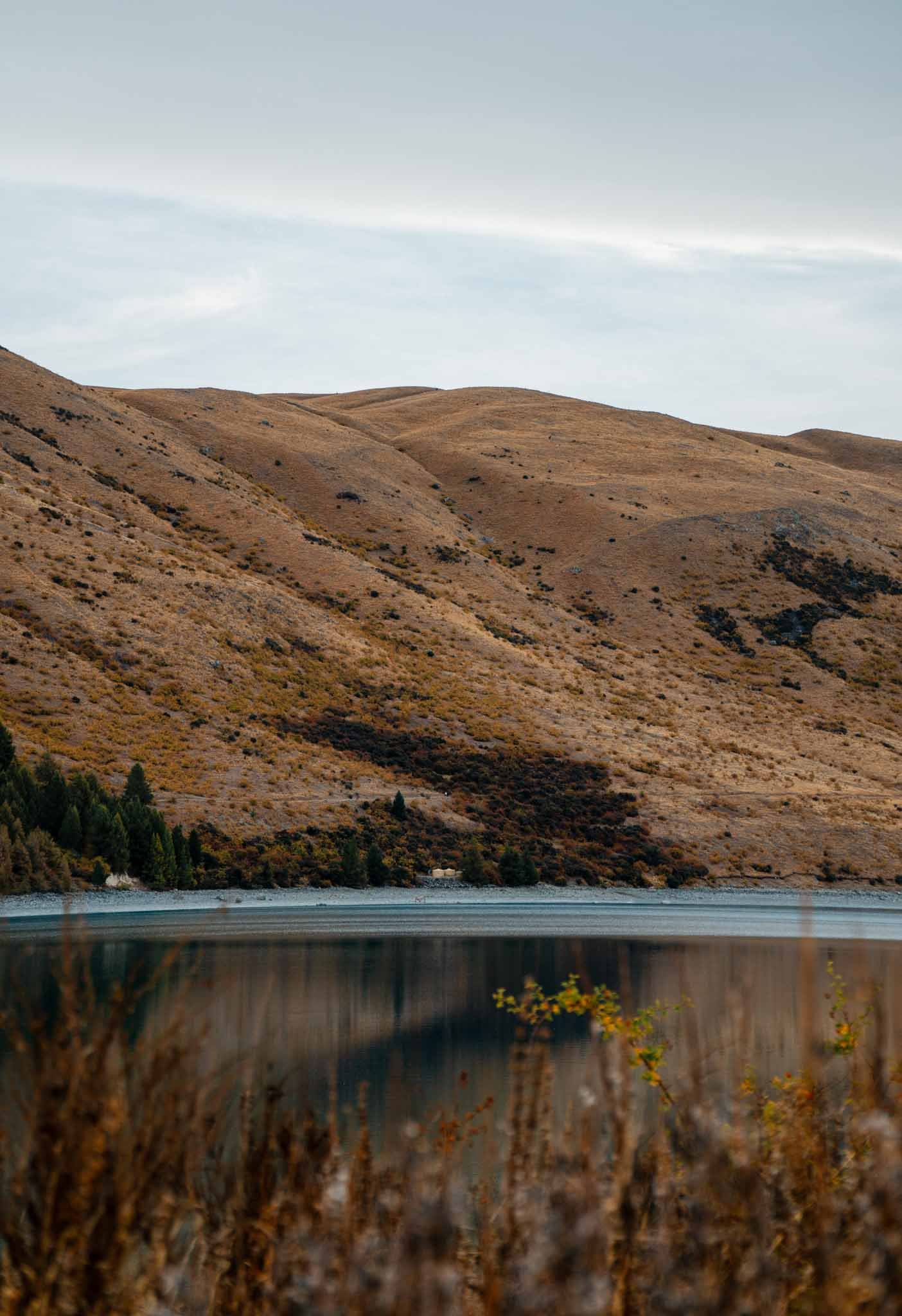A 3 week New Zealand road trip from Auckland to Christchurch
How to fill 21 days of travel around New Zealand
In late summer 2024, I loaded a sleeping mat, sleeping bag, hiking gear, and piles of clothes into the back of my car and drove south. As far south as Invercargill.
It took me two months to get from my home in the Coromandel Peninsula all the way to the bottom of the South Island and back. New Zealand is not small, and covering that much distance took time, a painful amount of money at the petrol pump, and a few minor car repairs.
Unless you’re very lucky, you probably don’t have two months.
But, you might have three weeks. If you do have this much time up your sleeve, and you’re game for an epic road trip, you can see a lot of both the North and South Islands.
This itinerary follows routes I’ve travelled and my favourite places to stop. It’s not the exact route I took to Invercargill, but a mash up of tips and highlights from this and other trips.
This itinerary does skip past a few of the more famous stops around New Zealand. I’ve made notes throughout of other places you might like to visit.
Also worth noting is that I don’t usually do a lot of high-ticket activities. I prefer hikes, beaches, surfing, and generally discovering the magic of New Zealand’s nature.
If you also enjoy just being in a place, and avoiding anywhere that feels overly commercial, you might enjoy my suggestions. I hope you do!
Disclosure: This itinerary contains affiliate links, which means I may make a small commission (at no extra cost to you) if you use those links. Thanks for your support.
Itinerary overview
Day 1: Auckland
Day 2: Rotorua, via Hobbiton
Day 3: Rotorua
Day 4: Taupo
Day 5: Tongariro National Park
Day 6: Whanganui and Wellington
Day 7: Ferry to Picton
Day 8: Abel Tasman National Park
Day 9: Punakaiki
Day 10: Hokitika
Day 11&12: Franz Josef
Day 14: Wanaka
Day 15, 16 & 17: Queenstown
Day 18: Aoraki Mount Cook National Park
Day 19: Lake Tekapo
Day 20: Christchurch
A few quick tips for planning a 3 week New Zealand road trip
Why Auckland to Christchurch? These are the two biggest transport hubs in New Zealand, so there’s a good chance you will arrive into and leave from these cities.
If you’re picking up a campervan, these are also where most campervan companies rent from (a select few also have pick up/drop off in Queenstown).
Starting from Auckland means you finish up in the more dramatic scenery of the South Island, but there is nothing stopping you from travelling South to North instead.
Sometimes it can be cheaper to rent campervans from Christchurch to Auckland — this can save a one-way fee, as companies need to relocate their vehicles back up north.
New Zealand is pretty big, and things are spread out, which means moving to a new spot most nights. That can get really tiring! If you have the time, I recommend scheduling in time to just rest and relax in one spot for a couple of nights — maybe in Christchurch.
In three weeks of road tripping, you will spend a lot on petrol — I use Gaspy to find the cheapest fuel options and keep costs down.
Get your own, personalised itinerary
This itinerary really is just a suggested route. There’s a good chance it doesn’t cover everywhere you’re interested in seeing.
If this itinerary doesn’t look quite right for you, take a look at my itinerary planning services. I have a few different options where we can talk through your trip and find the perfect itinerary for you.
A three week New Zealand road trip
Day 1: Arriving in Auckland
WHY STOP HERE: Auckland is the obvious place to start your trip, as your international flight will probably land here.
HOW MUCH TIME DO YOU NEED IN AUCKLAND: Auckland itself isn’t the most compelling place to visit, but it’s worth a night to get your bearings, or two if you want to visit Waiheke Island.
Should you spend a night in Auckland, or skip it?
That depends.
If you prefer to spend your time in nature, by all means head out of town straight away.
Unless, that is, you’ve come off a long flight and need to rest for a night. It’s not a good idea to drive a long distance immediately after a long-haul flight, so you can rest up for a night and explore Auckland a little while you’re at it.
Auckland has fantastic places to eat, drink coffee (or wine) and shop, so if you like exploring cities, it can be lovely.
I’ll be honest, though — there are better places to spend your time.
Where to eat in Auckland:
Head to Karangahape Road or Ponsonby Road for dinner — here are some of my favourite restaurants (all locally owned/owner operated):
Pici for pasta
Gemmayze Street for Lebanese in a beautiful arcade
Khu Khu Vegan Thai for… vegan Thai
Coco’s Cantina for happy hour pasta
Don’t miss:
Head to Maungawhau/Mount Eden to get the best sunset views of the city.
Or, head out to Piha for sunset. It’s a little bit of a drive, but it’s a beautiful beach.
WHERE TO STAY
Hotel Britomart is the most unique of the central city hotels
FEATURED STAY
The Convent
A very cool spot in Grey Lynn, which is ideal if you want to be just outside the concrete jungle of the city centre.
Another option, if you want to head south and skip Auckland altogether
If you would rather head straight out of Auckland city, Raglan is a great option (there aren’t that many nice places to stay within a couple of hours drive from Auckland airport, heading south).
Raglan is around 2 hours driving south from Auckland.
The little surf town has a laid back, bohemian vibe. You’ll find good cafes, cute shops, and a wild black sand beach that stretches for miles. Most people come here for surf, but you can also go on a sunset harbour cruise, or you just enjoy watching the sunset from Ngarunui Beach.
Where to stay in Raglan:
Bow Street Studios are really nice, or Raglan Sunset Motel is a bit more economical. Otherwise there are some nice Airbnbs around.
Day 2: Make your way to Rotorua (via Hobbiton or Waitomo)
A spring at Waikite Valley hot pools, via RotoruaNZ
Rotorua makes sense as a first stop out of Auckland. It’s on the way south and a major activity hub for the North Island.
Yes, that means it’s ‘touristy.’ But there are geothermal things here you can’t see anywhere else.
Heading down from Auckland (or across from Raglan) will take you past Hobbiton, so it’s easy to weave in a visit.
Visiting the Hobbiton film set only takes a couple of hours if you’re doing the classic tours, so you can easily fit this into an afternoon — just book ahead to secure your time.
After Hobbiton, you can drive to Rotorua and relax in the town in the afternoon. It’s not the most exciting town to explore, but Kuirau Park is the town park that is free to wander through, you can see some steam and hot mud in the evening when you arrive.
ITINERARY NOTES
If you’re coming from Raglan, you could also add in a stop at the Waitomo Caves. It will add about an hour or so of driving to your itinerary, but you will be close-ish.
WHERE TO EAT
Sabroso, a woman owned latin restaurant
Poco Tapas and Wine, a little owner operated spot
WHERE TO STAY
Most of the hotels around the centre of Rotorua are chains. Of these, I usually recommend the Quest.
There are a couple of great options for campervans near Rotorua. Orakei Korako offers camping in their carpark for free, if you pay to visit the park. You can park here overnight and visit the park first thing in the morning.
If you stay at the Waikite Valley Thermal Pools Campsite, access to the hot pools is included in the campsite fee, and you get access to the pools before the general public in the morning.
Day 3: Spend the day in Rotorua
There’s enough to do in Rotorua to fill a whole day (or even two, if you want to spend more time here). There is a great combination of Maori culture and geothermal activity to explore.
Te Puia is a one stop shop for geothermal activity and Maori cultural performances. There’s a carving school, a Maori arts and crafts institute, and even a kiwi house. Check out the evening hangi experience as well.
Wai O Tapu is a thermal park home to the champagne pool, the stunning green and orange pool.
Waimangu Valley has bright blue pools and the option of kayaking past steaming cliffs.
There are other activities in Rotorua — people seem to love the Redwoods, and the luge is always popular with children (I loved it when I was younger). But, I personally think there are more interesting forests to see and I don’t have kids.
So, I like visiting the hot pools and skipping town again.
Day 4: Drive down to Tongariro National Park, via Taupo
Taupo is a nice enough little town on the lakefront.
It’s pretty, but for some reason the lakefront restaurants are mostly fast food. If you want to enjoy what might be New Zealand’s most scenic Burger Fuel, this is the spot. To be honest this feels like such a missed opportunity — it could be a stunning place and instead the town feels bland and commercial.
In Taupo, the highlights are Huka Falls and the Aratiatia Rapids, where each day, water is released from the dam and it rushes through the gorge below.
I also love walking alongside the Waikato river in the Hipapatua Reserve, which also has some beautiful places to swim in summer.
There is also the Mine Bay Maori Rock carvings if you want to get out on the water (you can only reach the carving via boat).
None of these things are essentials, though. I think you can comfortably skip through Taupo and keep driving south if you find accommodation closer to Tongariro National Park.
The one stop I would make is a lunch and coffee break at Replete Cafe and Store — it’s a lovely little spot.
From Taupo you can drive south around the lake toward Tongariro National Park.
Day 5: Visit Tongariro National Park
Taupo to Whakapapa Visitor Centre: 90 minutes
Whakapapa Visitor Centre to Whanganui: 1 hour 45 minutes
Mount Ruapehu, on the right, casts a dramatic figure against the sky
Head to the Whakapapa Visitor Centre. There are short walks leaving from the centre and you can get some views of the volcanoes and see the flora of the area. See if you can find horopito, which is a native leaf that is hot and peppery when you eat it.
If you didn’t want to drive all the way to Whanganui on this day, you could stay around Ohakune. Or, head to Whanganui as a nice option to break up the drive to Wellington.
Whanganui is a historic river town (on the Whanganui River) and has a cute little centre. It feels like a smaller Wellington to me, creative and artsy. It’s the hub of glassworks in New Zealand, and I love NZ Glassworks where you can watch artists working the glass from a mezzanine floor.
Article Cafe is great spot for coffee and Porridge Watson is a very cool bar/hangout spot in the evening.
Day 6: Drive to Wellington via Whanganui
Wellington is New Zealand’s capital city, and it’s a pretty cool spot to spend a couple of days.
HOW MUCH TIME SHOULD YOU SPEND IN WELLINGTON: At the end of the day, Wellington is a cool little city, but it is just a city. I think an evening and a morning here is enough, you could stay longer if you wanted to check out Te Papa Museum and some of the art galleries.
But, you can also pass through. You’ll get to admire the harbour scenery from the ferry as you sail out of the harbour.
WHAT TO DO IN WELLINGTON
One of the must dos in Wellington is Zealandia, an incredible sanctuary project that has a 500 year plan to restore a valley near the city to a pre-human state. It’s a gorgeous place to go to see native birds.
WHERE TO STAY IN WELLINGTON
If you’re in a campervan, my favourite freedom camping spot near Wellington is at Red Rocks Reserve. It’s right by the water and you can start the Red Rocks walk from here, which is a wonderful stroll along the coast.
FEATURED STAY
The Intrepid
A former chocolate factory, renovated in a way that embraces its industrial past.
Day 7: Take the ferry to Picton, and explore some of the Marlborough Sounds
The ferry from Wellington to Picton takes around 4.5 hours, so it usually ends up taking up a lot of the day — although most of my ferry crossings have been in the middle of the night, as I always end up booking late.
If you don’t want to sail at 2am, I recommend booking in advance. And I really don’t recommend sailing at 2am, not only because of the lack of sleep, but because the crossing is beautiful.
Interislander and Bluebridge are the two ferry companies, pretty similar in terms of price and service, except Bluebridge leaves from the centre of Wellington and Interislander from a little further out.
I usually just compare both companies and pick the best price/time; they both have several sailings every day. The process of catching the ferry is also nice and straightforward, they really guide you through it (I was very nervous about that the first time I took it!)
WHERE TO STAY AFTER CATCHING THE FERRY
Picton is a pretty little town but there’s not much there beyond a couple of short walks. If you’re up for a little more boat travel, Hopewell Lodge is an amazing place to stay in the Marlborough Sounds.
If you’re camping, I highly recommend the Pelorus Bridge campground. Even if you’re not camping, you should stop here for the short walks and a swim in the glorious river.
FEATURED STAY
Hopewell Lodge
A family-run lodge deep in the Marlborough Sounds.
Day 8: Head to Abel Tasman National Park
After waking up somewhere in the Marlborough Sounds, you could enjoy a slow morning before heading across to Abel Tasman National Park.
The easiest place to find accommodation near the park is Kaiteriteri, but I prefer Marahau — it’s a much smaller village, and a lot more laid back than Kaiteriteri, which is a fairly developed holiday destination.
You can visit some of the sights in the area in the afternoon, like the famous Split Apple Rock. The beach there is nice for swimming, as is Kaiteriteri.
Day 9: Spend the day exploring Abel Tasman National Park
Day 10: Drive to Punakaiki
Stop in Murchison for lunch. There is a river running through Murchison which I enjoyed taking a dip in (head to the Riverside Holiday Park and then down to the river from there).
Otherwise it’s mostly wilderness on the way through.
There are some hotel pub type places to eat in Punakaiki, you should find standard pub grub here. There’s a cafe by the blowholes but it’s pretty standard, nothing special.
Stay:
Woodpecker Bay Bach (bookable on Airbnb) is amazing, I stayed a night here and loved it, but it has very limited availability (having a quick look, it seems like Feb is already fairly booked).
I also stayed in this Airbnb and loved it (outdoor bathtub) and the hosts were lovely – they were the ones who told me where to go to search for pounamu/greenstone on the coast, their house was full of stones they had found. Let me do some washing too which is always handy!
There are some other good little airbnbs around there though, lots of cute little places in the bush. Canopy Camping has some more deluxe options (like this one, my dream home) but they often have a two night minimum…
Otherwise there is a more standard Scenic Hotel (a chain with places around NZ)
Day 11: Make your way down to Franz Josef, via Okarito
Caught between Paparoa National Park and the wild Tasman Sea, Punakaiki is famous for the pancake rocks and blowholes the waves have carved out of soft limestone.
The whole coastline here is beautiful though, with rich rainforest and dark rivers swirling out of gorges.
Walk the Punakaiki Blowholes track in the morning — it only takes around 30 minutes to walk the track and admire the view. I also love the Porari River Trail, which is a little longer but well worth it for the lush nikau forest.
There is also the Truman Track nearby if you have the time and feel up to it.
The stretch of road just south of Punakaiki is stunning, take it slow and stop for the lookouts. The coast here is just great.
You’ll pass through Greymouth which is a pretty grey town (a coal mining town), but if you want lunch the DP1 cafe is very cool.
FEATURED STAY
Rainforest Retreat
A place to stay in the lush rainforest.
Day 12: Hike in Franz Josef
Heli hiking on Franz Josef glacier
The view from Alex Knob
Hikes near Franz Josef:
Franz Josef viewpoint, 30 minutes return. A nice walk, but busy and you’re pretty far from the glacier.
Alex Knob Track, 8 hours return. I think this was my favourite, but if you want to do this one you are game for a sunset walk.
Roberts Point Track, 5 hours return. This one gets you closer to the glacier and has cool swing bridges along the way.
Day 13: Drive through Haast Pass to Wanaka
Thunder Creek Falls — one of the stops on the drive from Franz Josef to Wanaka
The drive from Franz Josef to Wanaka is one of my favourite stretches of road in the South Island.
There are lots of wonderful places to stop, both on the West Coast and in Haast Pass, so I would allow a full day for this trip, even if Google Maps only says four hours.
First, you’ll pass through Fox Glacier township, so it’s worth stopping by to check out some of the walks there, as well:
The South Side walkway, 2 hours return. This one is worth doing for the forest views alone.
Mt Fox Route, 8 hours return (but it’s a very rough track). If you want a less travelled route, this one is amazing. You would have to start quite early.
The short walk around Lake Matheson is stunning, and there’s a roadside lookout nearby where you can see Fox Glacier.
Ship’s Creek
Thunder Creek Falls
Brewster Hut
Fantail Falls
Isthmus Peak
Lake Hawea
ITINERARY NOTES
If you’re in a campervan, a lovely campsite on this route is Kidd’s Bush Reserve. Waking up there and going for a swim in the crystal clear blue water of Lake Hawea was divine.
Day 14: Hike in Wanaka
WHY STOP HERE: You could push on to Queenstown on this day, but it’s already a long day of driving and Wanaka is a cool little town. The setting isn’t as dramatic as Queenstown, but it’s still pretty.
Wanaka is an outdoorsy town by a lake. It makes a great base for hikes in the area.
WHAT TO DO IN WANAKA
One of the best things you can do in Wanaka is definitely a Wild Wire waterfall climb.
The most popular day hike near Wanaka is Roy’s Peak, but Isthmus Peak is another great option with far fewer people.
There is also the Rocky Mountain summit, which is a great option if you want a shorter walk — it’s only 3 hours return, but still delivers fabulous lake views.
Wanaka is a jumping off point for exploring Mount Aspiring National Park. If you’re looking for an adventurous way to see the park, check out Packrafting Wanaka.
If you go for a hike, recover in the Secret Sauna afterwards.
Day 15: Make your way to Te Anau
The drive from Wanaka to Te Anau is around three hours. You’ll pass by Queenstown, so you could very easily make that your lunch spot.
I suggest going all the way to Te Anau to give yourself a little more time in Fiordland.
You could stop in Queenstown and visit Milford Sound as a day trip, but it makes for a very long day and you are herded through each stop along the road to Milford Sound.
Te Anau is a much more laid back town compared to Queenstown, and you’ll have a lot more freedom in terms of stops and timing for the boat trips — essentially, you can work around the crowds that flock to Milford.
Day 16: Visit Milford Sound
Milford Sound has some of the most dramatic scenery in New Zealand
Looking down into Milford Sound from up on Gertrude Saddle
WHY GO: Milford Sound is one of the highlights of all New Zealand — a deep fjord carved into the rugged coast of Fiordland.
Visiting Milford Sound usually involves a boat trip on the inky dark water, to see waterfalls crashing down cliffs and wildlife such as seals and penguins.
HOW MUCH TIME DO YOU NEED FOR MILFORD SOUND: A boat trip in Milford usually only lasts for around two hours, but you’ll need a full day to get from Te Anau to Milford Sound and back again, assuming you want to explore scenic stops along the way.
ITINERARY NOTES
You could also spend a night in Milford Sound, at the Milford Sound Lodge (they have campervan options if you’re on a budget).
This would mean a long drive there and back, but staying in the sound is a pretty unique experience.
You could then use your drive back to Queenstown to tackle some of the longer hikes along the Milford Road, like Gertrude Saddle, Key Summit, or Lake Marian, instead of spending that day in Glenorchy.
MILFORD SOUND TOURS FROM QUEENSTOWN
Take a day tour if you don’t want to drive on the long and winding road in to Milford. I recommend this small group option as they sail with Cruise Milford, which is the only family operated cruise boat in Milford Sound.
If you’re short on time, or just don’t fancy spending 8 hours on a bus, you can coach in and fly back, or vice versa. This way you can still see the stunning Fiordland scenery along Milford road, but save yourself some hours in the bus.
There is also the option of flying both ways.
Central Otago wineries – you can take a tour or drive to visit some of the different ones for lunch. There are also hop on hop off shuttles which can be good if you want to be flexible (some more info here).
Mt Difficulty is beautiful for lunch and rose, Mt Rosa is a gorgeous spot to sit for a bit, and Peregrine has some of my favourite riesling. Amisfield is the most fancy and offers tasting menus for lunch ($$$). Gibbston Valley is the most commercial but handy to have the restaurant there. You’ll find excellent pinot noir at all of them!
Mora Wines and Kitchen is a good spot for lunch, as is Kinross (really like this one as you can eat and try a bunch of wines, it’s also a nice spot and feels relatively down to earth. They also have a wine called Holy Schist which is fabulous in itself, and they were very helpful in helping me ship bottles of wine to myself, which is dangerous and delightful in equal measures!).
Arrowtown is lovely for a half day out, just a small, cute town to explore.
Provisions of Arrowtown is a good cafe
Aosta is the top place to eat in town for dinner
Blue Door is a nice bar
WHERE TO STAY IN QUEENSTOWN
I recommend staying Frankton or slightly out of the centre of Queenstown, to make life easier (parking is much easier in Frankton and you’ll be closer to the airport and supermarkets).
I stayed in this house with friends and it was perfect for a larger group (five people).
If you would rather be central, these are all good options:
Browns Boutique Hotel (locally owned)
Tahuna Pod Hostel (a great budget option or for solo travellers)
FEATURED STAY
Stay of Queenstown
A locally owned place located just outside the bustle of the centre of town.
Day 18: Drive to Aoraki Mount Cook National Park
Aoraki/Mount Cook National Park is one of the most stunning locations in the whole South Island.
Plan to spend most of a day there — you’ll want time to explore the walking trails, admire the glaciers, and generally enjoy the scenery.
It’s around 2.5 hours to drive from Wanaka to Aoraki/Mount Cook (and around 1 hour from Twizel) so set off early. You’ll want to stop at Lake Pukaki to check out the views, and on the road into the park. It’s a beautiful drive.
FEATURED STAY
Lakestone Lodge
Overlooking Lake Pukaki, with a view of Aoraki/Mt Cook.
Day 19: Visit Aoraki, then make your way to Tekapo
Tasman Glacier boat could be an option, but you need to walk 30 min to the start point. I have never done it but heard very good things.
Short walk to Kea Point, start from the campground and it’s 1 hour. Lovely views of Mt Cook!
You can see some other short walk options here, all are pretty great. The Hooker Valley Track gets very busy, it’s probably the most visited walk in NZ. It takes around 3 hours return but is very well graded. Honestly, the other walks are also stunning through – the whole park is beautiful.
The visitor centre at Mt Cook is also well worth visiting, it’s free but has lots of displays on the history and ecology of the area.
Stay: The Hermitage is the premium option (but the most expensive) – serves meals, has beautiful views.
Aoraki Alpine Lodge is also fine.
In Tekapo, walk around the Church of the Good Shepherd and the lakefront.
Star gazing tours at night are also nice (Dark Sky Project is the fancy observatory tour, Chameleon Stargazing do a more budget option), and the observatory is worth visiting during the day for the cafe up there (Astro Cafe). Lovely views! You do have to pay $8 to drive up to the observatory though.
Accommodation in Tekapo does tend to be a bit more expensive, but there’s not much else around (Twizel is another 40 minutes driving, which makes it a bit much for one day).
Day 20: Tekapo to Christchurch
Burke’s Pass
Burke’s Pass
Tekapo to Christchurch: 3 hours drive
Stop in Geraldine. Susan Badcock Gallery is worth poking your nose into, and Cafe Verde right next door is nice for lunch. There is also the Barkers food store there too, which has free tasting samples of all their chutneys.
Fairlie Bakehouse – the classic lunch stop, people go here for pies
Burke’s Pass is a quirky little roadside gallery, worth a stop
WHERE TO STAY IN CHRISTCHURCH
The Novotel is a great central option, right on Cathdral Square, next to the library — easy walking distance to all the central Christchurch attractions.
I did also like staying at the Bealey Quarter which was just outside the city centre, so I didn’t have to pay for parking or worry about my car during the day (I was there for a week, so that would have added up).
The Drifter is a new arrival in Christchurch, and a very cool addition to the city. Although it’s owned by an Australian accommodation group, it’s still a relatively small scale one. Their focus is on design-led accommodation, and The Drifter is certainly that. There are some very cool communal spaces, including an in-house tattoo studio
FEATURED STAY
The Observatory Hotel
A boutique, design focused stay in the Christchurch Arts Centre.
Day 21: Christchurch
Christchurch is the largest city in the South Island, and I find it an interesting place to visit. It can make a nice place to round out your trip.
This post is about:
Thanks for reading this far! I hope this three week itinerary helped give you some ideas for planning your New Zealand trip. If you found this helpful, you might also like some of my other articles:
